JNR KiHa 40 series

Data (as of 29 Nov 2025)
| Status: | Critically Endangered |
| (JR Hokkaido & East) | |
| Endangered | |
| (JR Shikoku) | |
| Near Threatened | |
| (JR West, JR Kyushu) | |
| Vulnerable | |
| (Aizu Railway) | |
| Least Concern | |
| (others except Aizu) | |
| Extinct | |
| (JR Central) | |
| Constructed in: | 1977-82 |
| Number built: | 888 |
| Registered: | 416* |
*Excluding carriages awaiting diposal.
History
The KiHa 40 series was developed by Japanese National Railways to replace old diesel trains on rural lines. The Kiha 40 series consists of three principal types: KiHa 40, KiHa 47 and KiHa 48. The first one is double-ended. but the latter two are single-headed. KiHa 40s and 48s are vestibuled (with exceptions), but KiHa 47s are not and have two-leaf sliding doors. Unlike other DMUs at that time, the KiHa 40 series were initially painted vermilion, which is often referred to as "Tarako" (pollock roe) livery by enthusiasts.
Bodies of the KiHa 40 series are based on KiHa 66 series, which are as large as electric multiple units so that passengers felt a little more comfortable than old diesel trains, but the KiHa 40 series trains are so heavy that their acceleration and maximum speed are still low. It is difficult to use the series on lines with steep gradients so that they could not replace some of their predecessors, e.g. KiHa 52 and KiHa 58.
They were introduced to various lines across the country, from the northern tip of Hokkaido to the southern tip of Kagoshima Prefecture. It is not well known that the KiHa 40 series were used in Tokyo as well until 1991 before Hachiko Line was electrified. When JNR was privatised in 1987, 887 carriages were distributed to all JR companies but JR Freight. They converted many KiHa 40 series to be compatible with driver-only operation. Those companies except JR Central also remodelled some of them to "Joyful Trains" or special trains for tourists with larger windows and comfortable seating.
JR Hokkaido had used them on the entire network. In 1988, the company converted some of them for express services and renamed KiHa 400 series, installing even more powerful engines and reclining seating. Some of them were converted again to Joyful Trains with tatami rooms. Those for regional services have gradually been replaced with new trains.
JR East had used the KiHa 40 series mostly in Tohoku region, such as Aomori, Iwate and Miyagi Prefectures as well as Niigata area. It is also worth noting that the series were also used in the Greater Tokyo Area until 2017 (Karasuyama Line). The series owned by JR East declined in the late-2010s and withdrawn from all regular services by 2021.
JR Central had used the series mostly in Gifu and Mie Prefectures, to be specific, Takayama Main and Kisei Main Lines. Until the 1990s, the company also used them for Taketoyo Line trains including services to and from Nagoya. They were withdrawn in 2016.
JR West succeeded the largest number of the series, and has been using on the entire network except urban areas. The company converted some KiHa 48s on Bantan Line to double-headed carriage, renaming KiHa 41. It is considered to be the ugliest remodelling in the history of the KiHa 40 series.
JR Shikoku and JR Kyushu are using the series as well. The series is declining in both islands as new trains are introduced and services on unprofitable lines are reduced, but still operational.
Several private railways are also operating the second-handed KiHa 40 series. In addition, some carriages were exported to Myanmar and Thailand.
Current Operations & Future Prospects
JR Hokkaido uses KiHa 40 series on Hidaka Main Line and very few on Muroran Main Line between Tomakomai and Iwamizawa. A few carriages are used as shunters in Sapporo area, which are not for passenger services.
JR East retains two Joyful Train units, namely View Coaster Kazekko and Koshino Shu*Kura, both of which are for rail tours and special trains during high seasons.
JR West operates the series on various lines such as Hokuriku, Chugoku and San'in regions. The KiHa 40 series is the most common type on non-electrified railways. JR West built an electric-diesel train called DEC 700 series in 2021, and though it is still under testing, JR West might mass-produce it in the late-2020s or the 2030s to replace the KiHa 40 series. However, no details have been officially announced so far.
JR Shikoku has several carriages of the series and uses on Mugi, Naruto and Tokushima Lines mostly during peak times. There are limited services towards Takamatsu as well. The company is going to introduce new diesel trains for regional services in 2026 to replace the KiHa 40 series.
JR Kyushu uses the series mostly in Kagoshima, Kumamoto, Miyazaki and Oita Prefectures. The company also has several converted units for limited express at weekends and holidays such as Futatsuboshi 4047. Those in Fukuoka Prefecture were replaced with 819 seriesbattery electric multiple units, while others in Nagasaki area were replaced with YC1 series diesel multiple units, but the KiHa 40 series are likely to remain in the other areas for a while.
South Hokkaido Railway (also known as Donan Isaribi Tetsudo), Aizu Railway, Hojo Railway, Kominato Railway and Nishikigawa Tetsudo recently introduced the series, many of which are for tourists. Aizu Railway plans to replace old trains including KiHa 40 with new trains from 2026.
Photos

In Sapporo area, KiHa 40s were used along with KiHa 141 series before the electrification of Sassho Line.

Some of those in Hakodate area were transferred to South Hokkaido Railway, but JR Hokkaido still uses them as well.
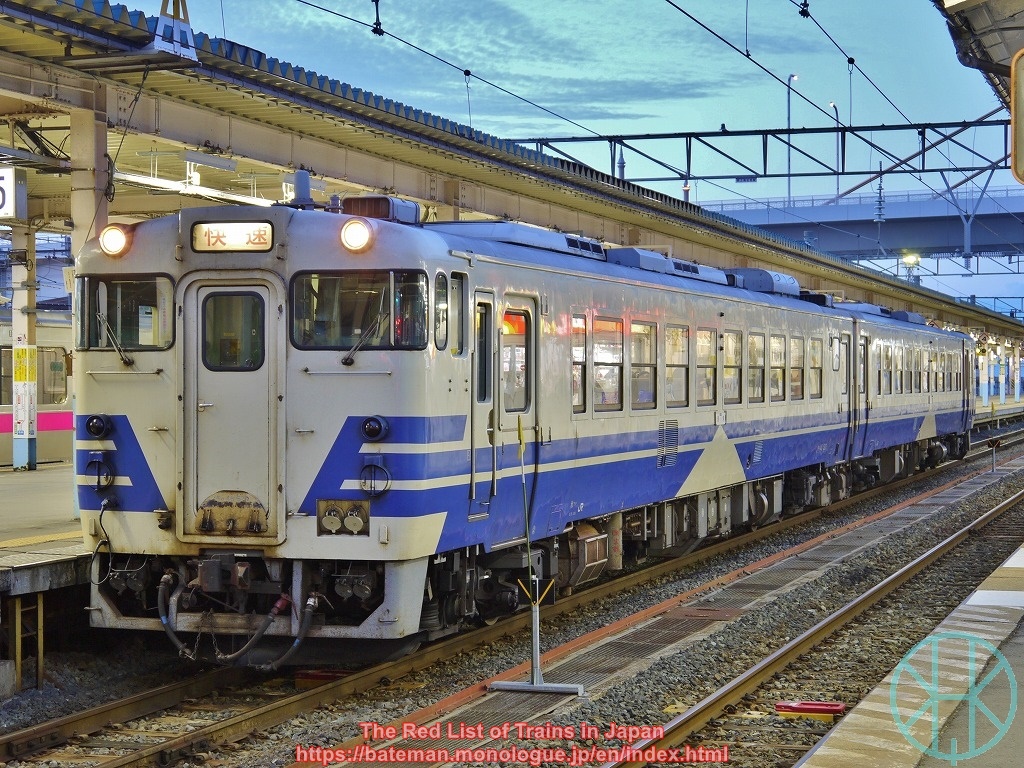
JR East had used many KiHa 40s and 48s in the Northeast region, such as Gono Line.
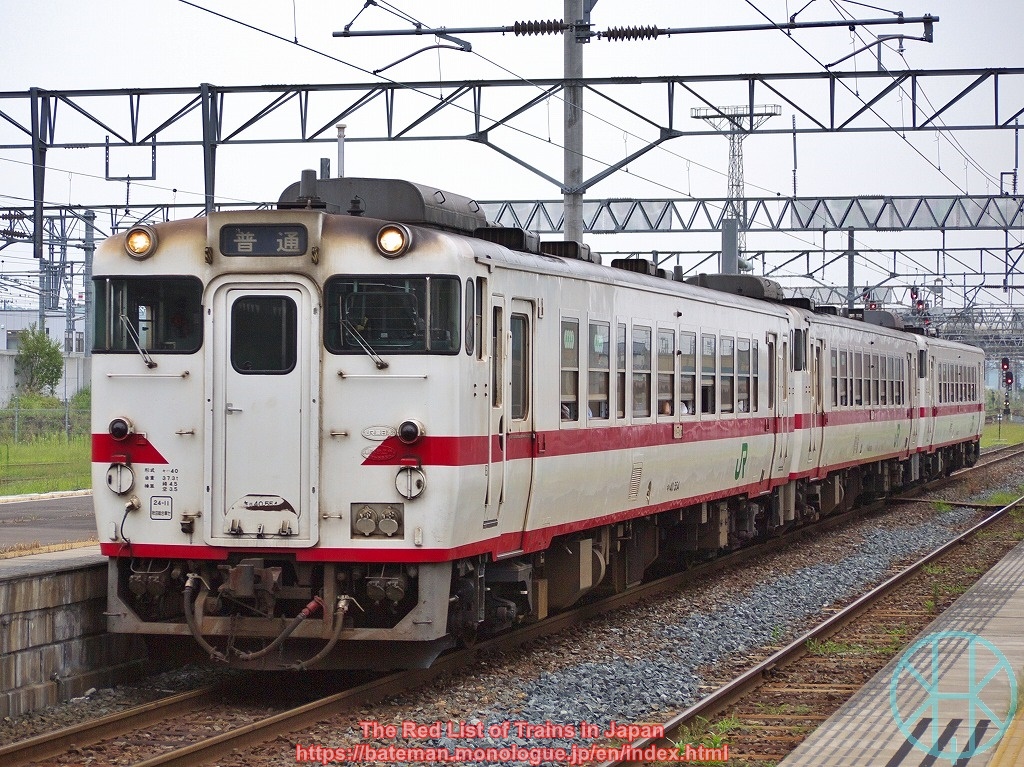
In Aomori and Morioka areas, KiHa 40s and 48s had no air conditioning until the very end in 2018.
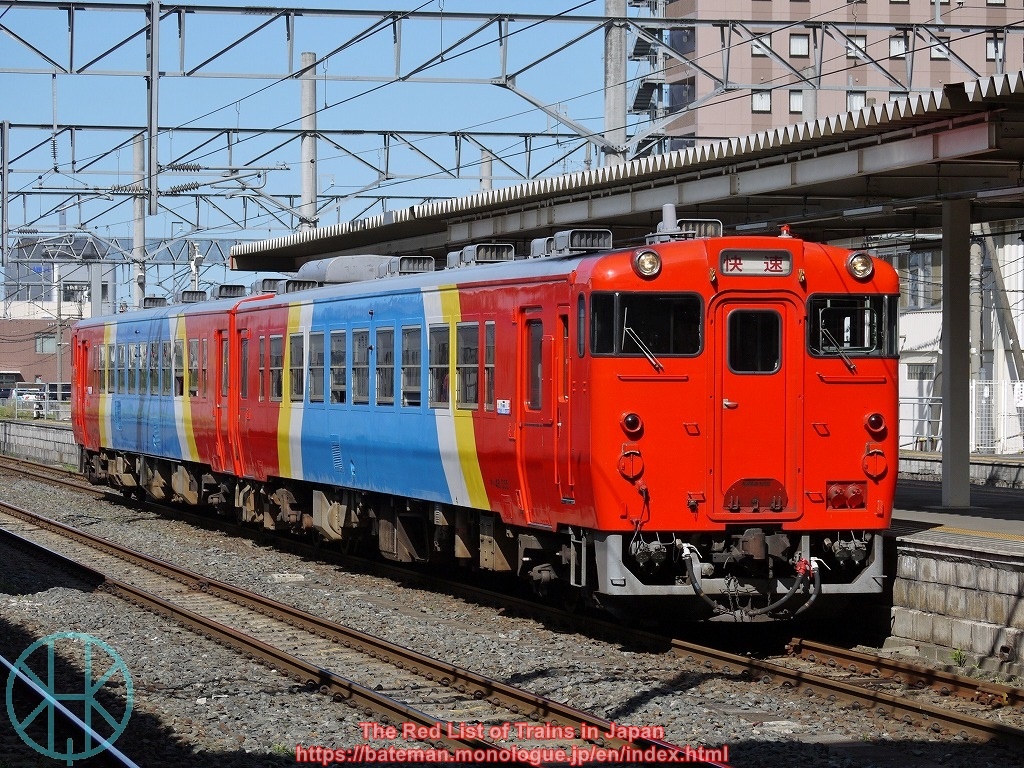
KiHa 48 Umineko in Aomori area, which looked unchanged but had been refurbished with reclining seating.

So-called Kogota Livery, which was common in Fukushima and Miyagi Prefectures. Kominato Railway purchased one in 2020.
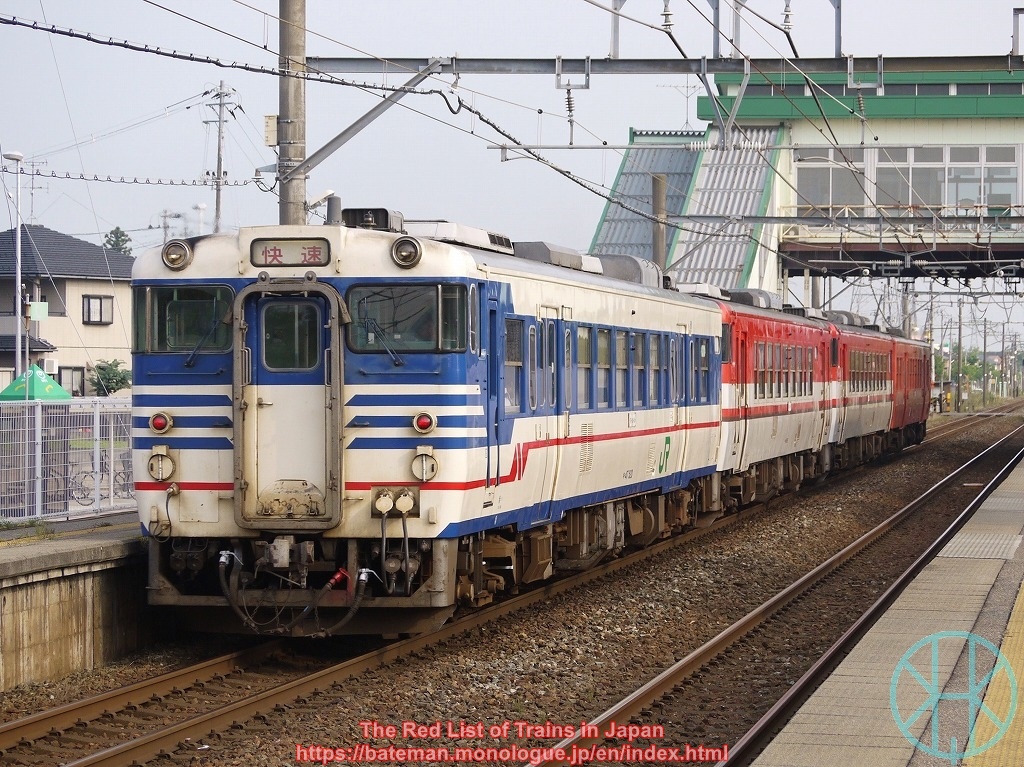
KiHa 47s and 48s were common in Niigata area as well.
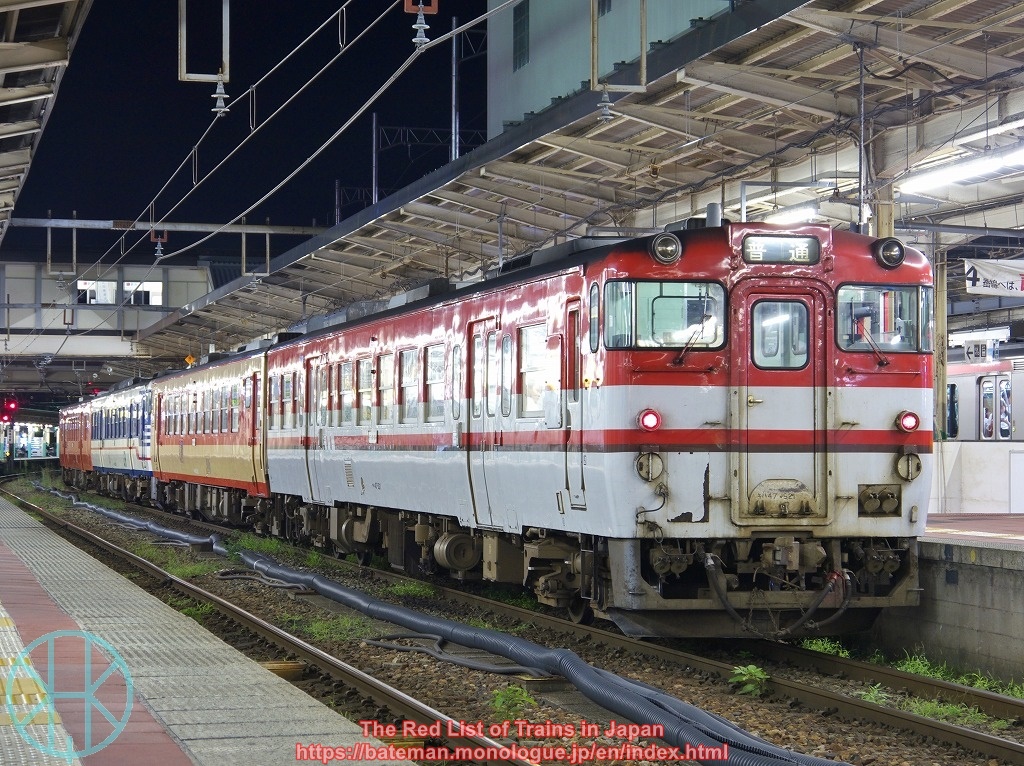
Some of those in Niigata area were later repainted with red patterns.
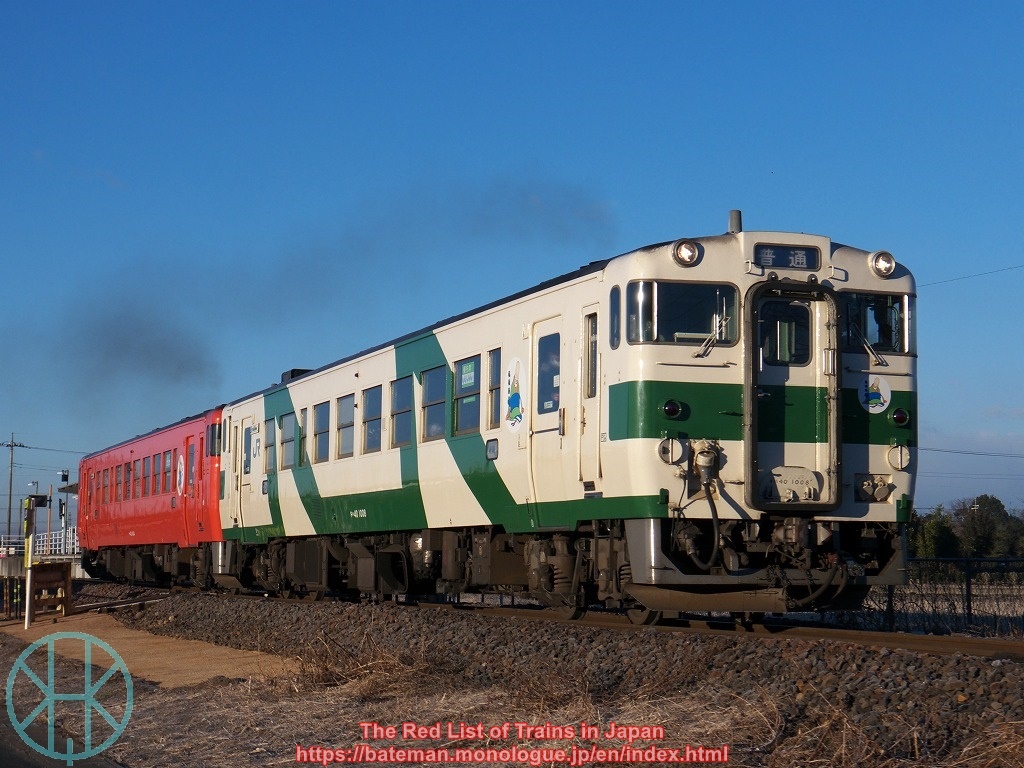
In Greater Tokyo Area, a few KiHa 40s were operated on Karasuyama Line until 2017.

A replica of The JNR Standard Livery for Diesel Trains, in which diesel trains in the 1950s-70s were painted.

JR Central had used KiHa 40s, 47s and 48s until 2016, many of which were exported to Myanmar.

Those owned by JR West were dramatically refurbished and still widely used. They were mostly restored to the original livery to reduce costs of painting.
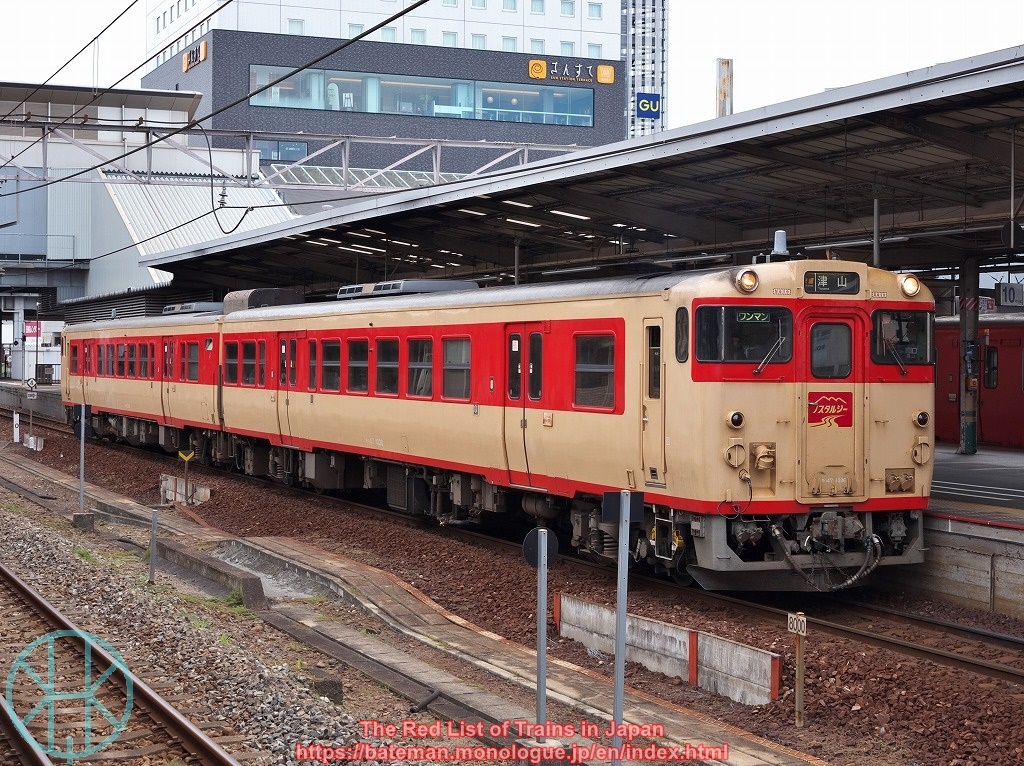
Since the mid-2010s, JR East and West have been painting a few of them like express diesel trains (e.g. KiHa 58 series).
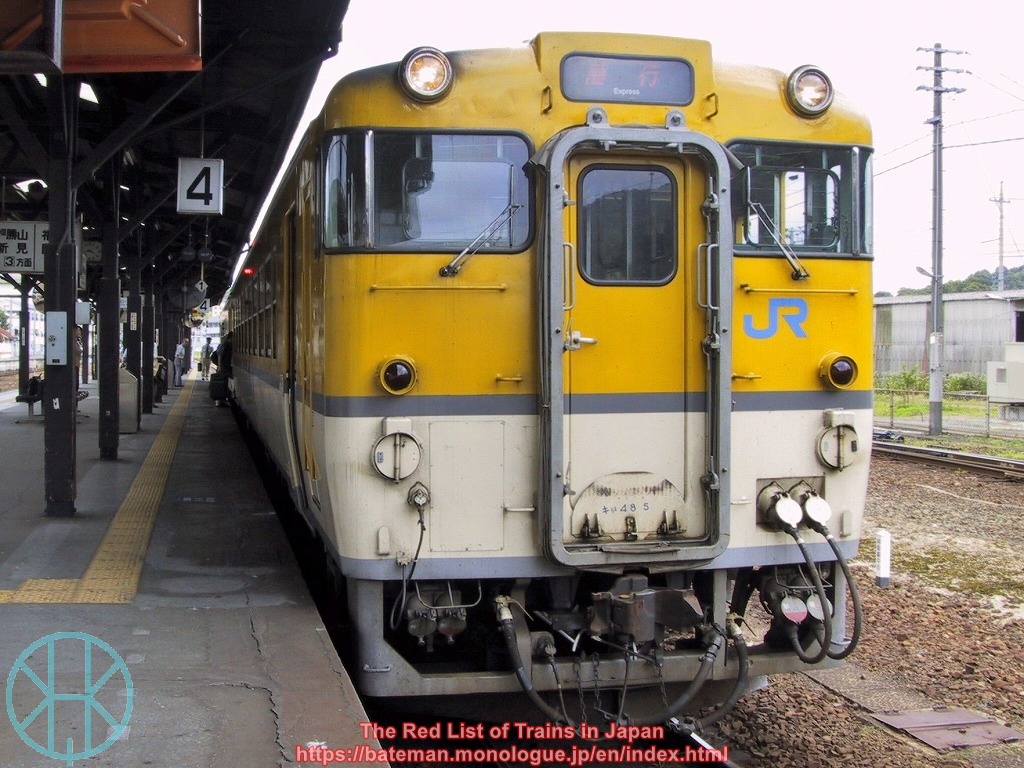
Despite the KiHa 40 series is a suburban train type, JR West used it for express services until 2009, which was nothing but rip-off. This is Express Tsuyama (Okayama - Tsuyama).

JR Shikoku units are painted white and blue, one of the most popular livery among railway enthusiasts.

Standard carriages owned by JR Kyushu look simple.
(Updated: 29 Nov 2025)
